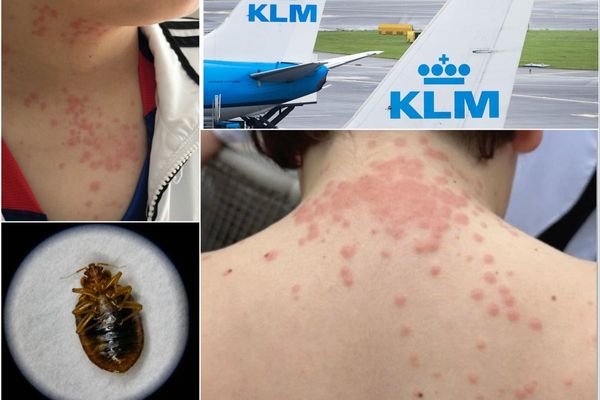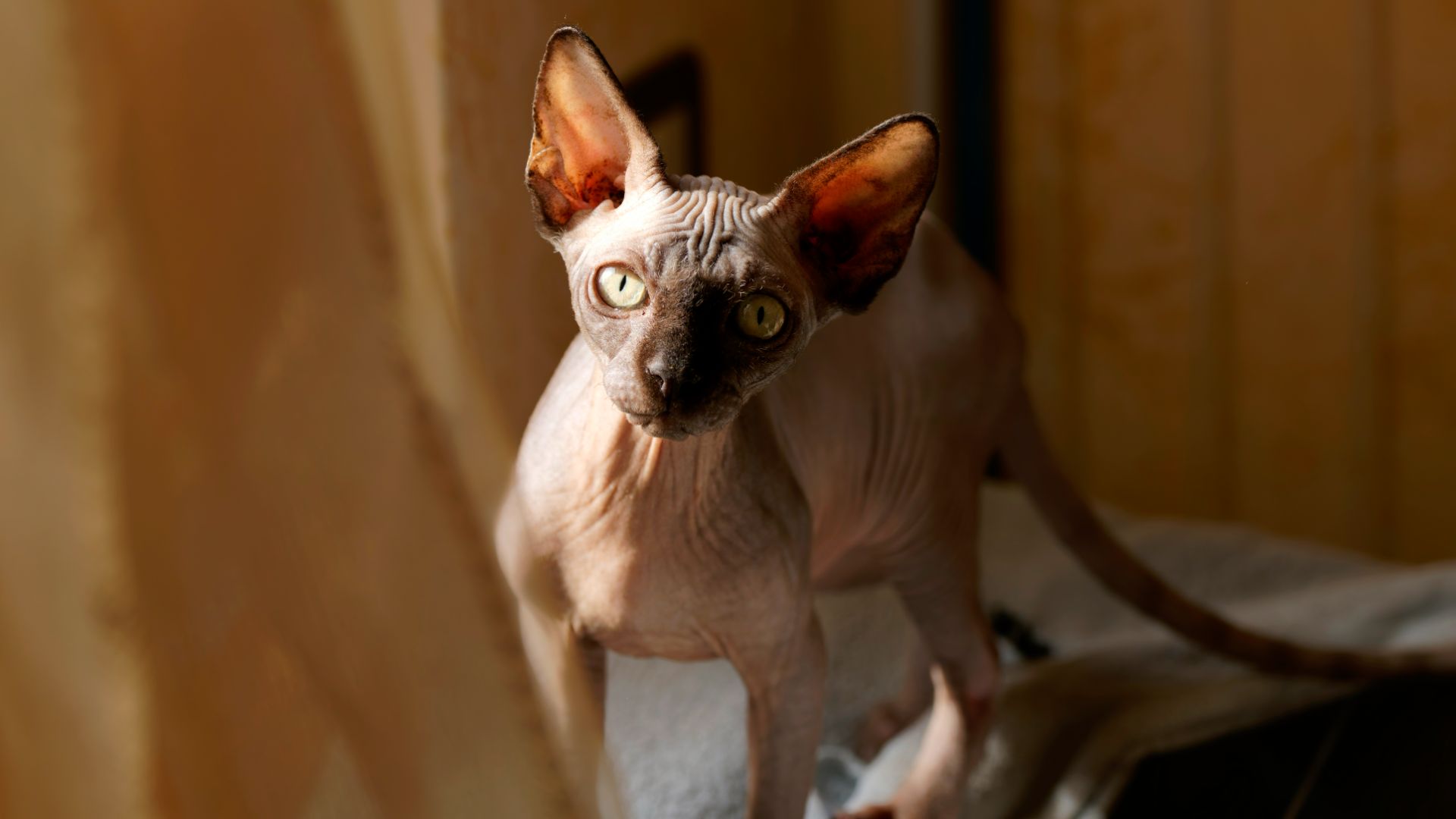
Hairless cat breeds are incredibly unique, not just in looks but in temperament, history, and more. Hairless cats can be traced as far back as the Aztec period, but in the last few years they have become incredibly popular and sought after by cat lovers.
While some are completely bald, most hairless cat breeds are actually covered in very fine and soft down-like fur. You won’t need to arm yourself with the best cat brush, though – this is the kind of fur that you can’t spot until you get up close. Sometimes this fur can be a light coating across the entire body, while other breeds may just have it on certain parts of the body, like their tail or their toes.
Because of their unique hair/skin situation, hairless cats require a lot of maintenance. They need to be regularly bathed with the best cat shampoo because they don't have hair to absorb oils from their skin, so a weekly bath is necessary. They also need to be protected in the colder months with a sweater or coat, and given a nice layer of cat-friendly sunscreen during the summer as they can burn easily in the sunlight.
Hairless cats are also not hypoallergenic, as the proteins found in the skin and saliva can trigger allergic reactions, not the hair itself. However, because hairless cats shed less, some people allergic to cats do find they can coexist well with these breeds.
So, while hairless cats do require a fair bit of attention to ensure they thrive, they’ll also reward you with their playful spirit and affectionate natures. Most also make great lapcats, so if you’re looking for a kitty that will snuggle up with you, they’re a great choice. Here are eight of our favorite hairless cat breeds…
Hairless cat breeds
1. Sphynx
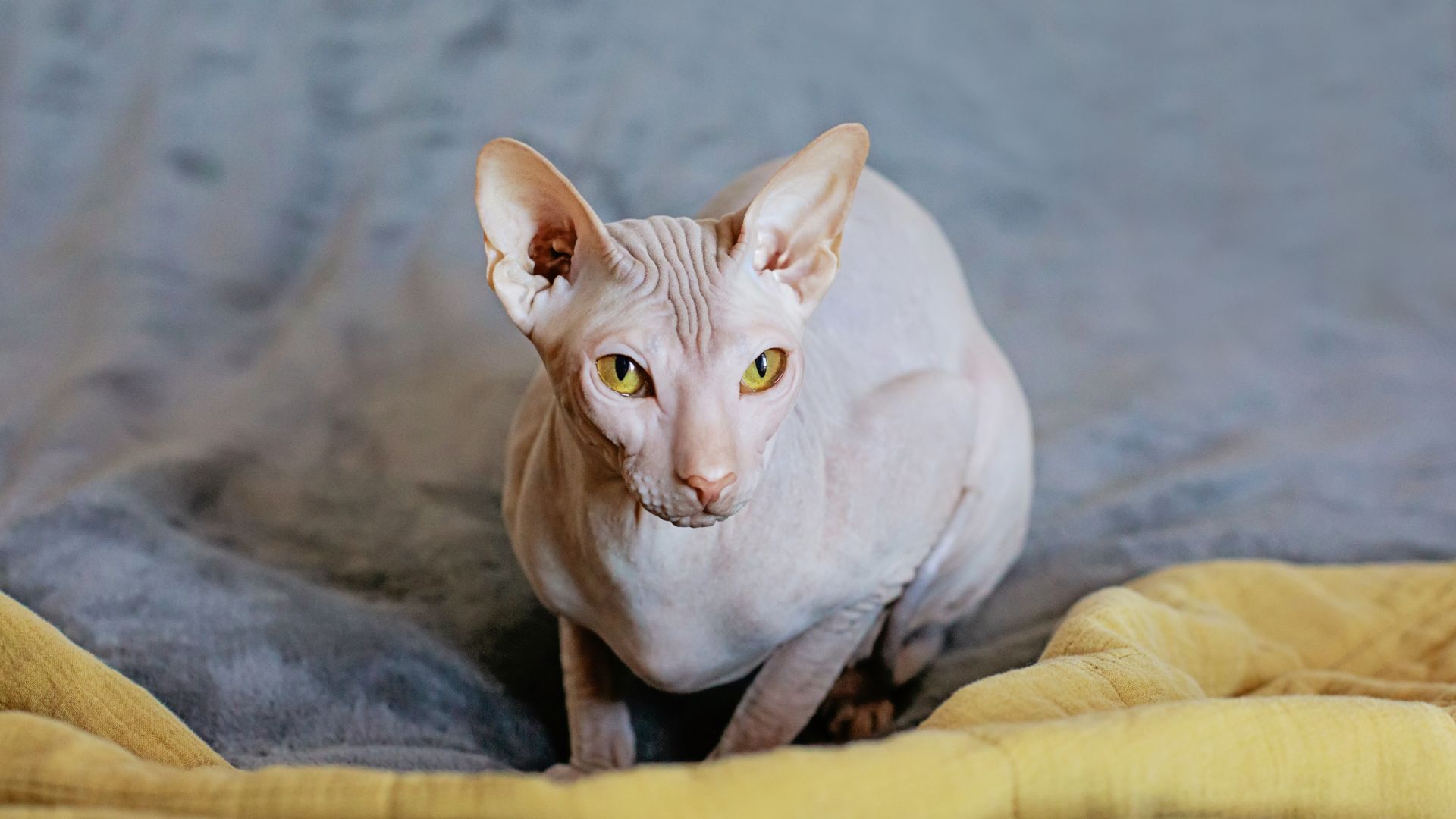
Sphynx cats are probably the most well-known of all the hairless cat breeds. They are extroverted, energetic, super-intelligent, highly curious, and overflowing with affection that it just loves showering on their owner.
Elegant in appearance with lemon-shaped eyes and a fine-boned body, the Sphynx craves attention, so they’re the ideal buddy for you if you’re looking for a feline friend that will always want to be where you are. They are also incredibly talkative, so expect them to be chatty when they're tailing you around the house. Be prepared to spend a lot of time playing games and undertaking other enrichment activities as this is one indoor cat breed that needs a lot of stimulation.
In terms of their coat, Sphynx cats vary in their degree of hairlessness with some having a fine fuzz all over their bodies and others having it just on their extremities. Even so, they are probably as close to a hypoallergenic cat breed you’ll ever get. They’re generally healthy, although they are prone to rashes and fungal infections, so they will need to be bathed or sponged regularly.
2. Bambino
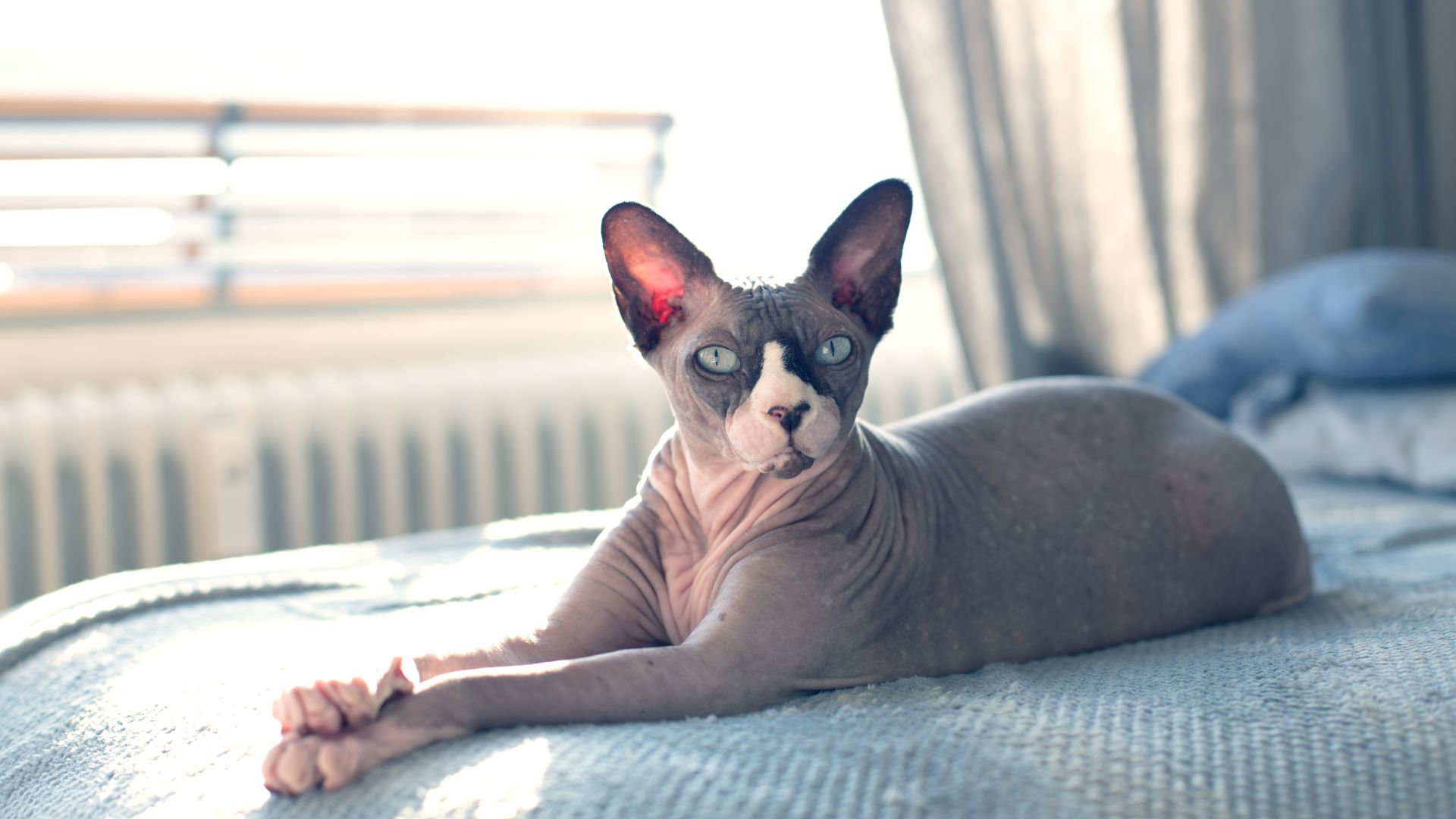
Developed in 2005, the bambino is a hybrid cat breed the result of the Sphynx being bred with the munchkin. When you mix the recessive hairless gene of the former with the short-legged gene of the latter what you get is a rather cute, almost bald dwarf cat. Like most hairless breeds, the bambino (which means ‘baby’ in Italian) isn’t completely bald and is instead covered in a light peach fuzz that makes them feel like suede to the touch.
Highly social, the bambino is one of the most affectionate cat breeds that loves being with its people and it adores lap time too, so if you’re wanting a snuggle buddy, this little guy is a great choice. Otherwise, bambinos appreciate one of the best cat beds to hunker down in. They love other animals (including dogs) and get along great with kids, making them the ideal family pet.
This cat is a true sweetheart, but don’t let their loving hearts fool you – this curious kitty is more than a little mischievous and is forever seeking out adventure, so you’ll find them in all sorts of weird and wonderful places as they look to explore their environment.
3. Peterbald
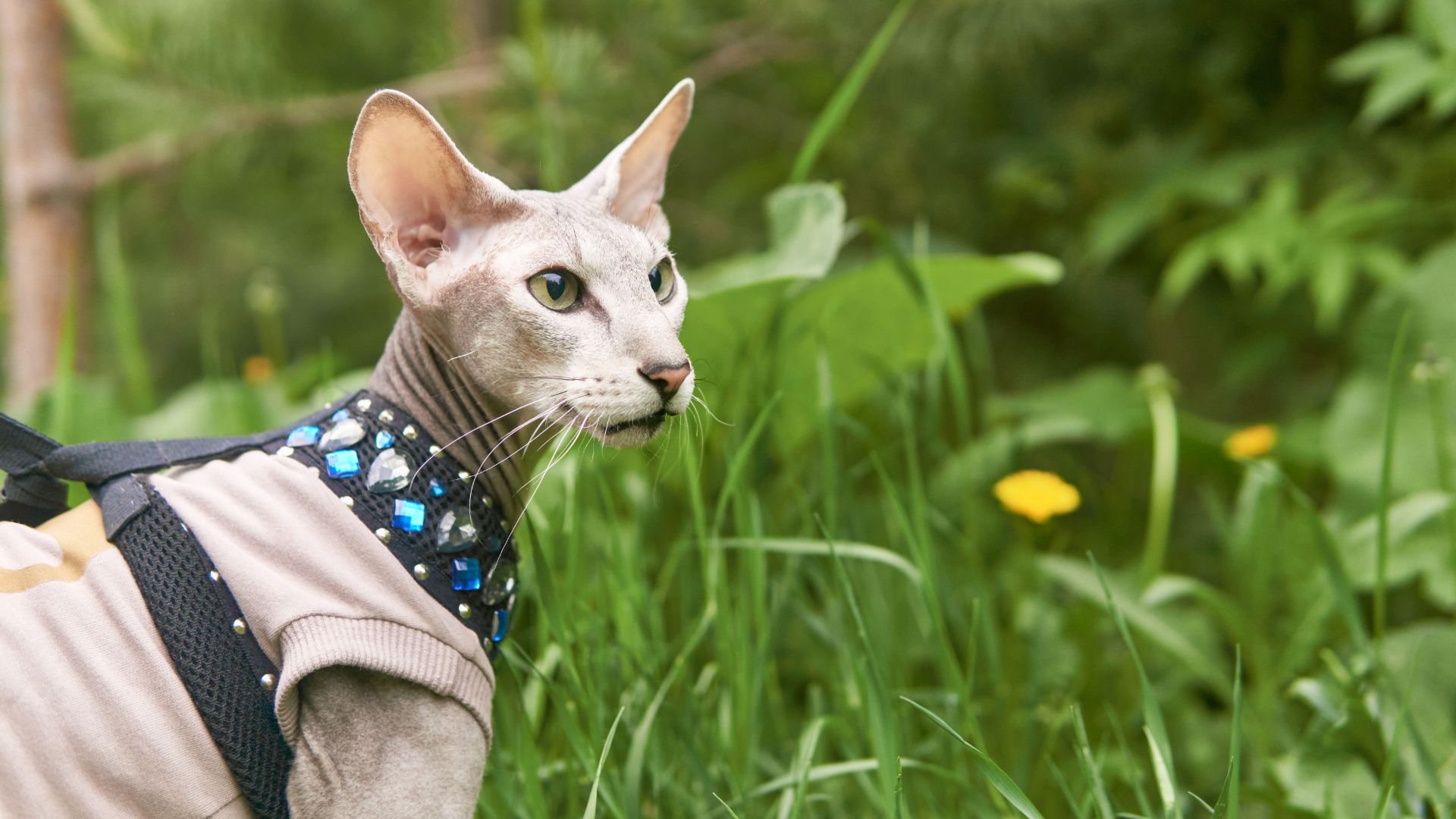
Originating from Russia, the Peterbald is easy to spot thanks to its oversized ears and whip-like tail. It's the result of breeding between the Donskoy and the oriental shorthair. Created in 1994, it was first popular in St Petersburg, Russia, hence it was given the name Peterbald.
This breed comes in five different coat types with varying levels of hairlessness and its coat can change in the first few years of life, either growing or losing fur. They are a highly vocal breed, as well as loving, loyal, and affectionate, and they develop incredibly strong bonds with their family members.
The Peterbald is an easy-going housemate, although they like to play and climb, they’re most content following their humans from room to room chatting all the way. They’re unlikely to leave your side, so be prepared to be supervised in everything that you do.
4. Donskoy
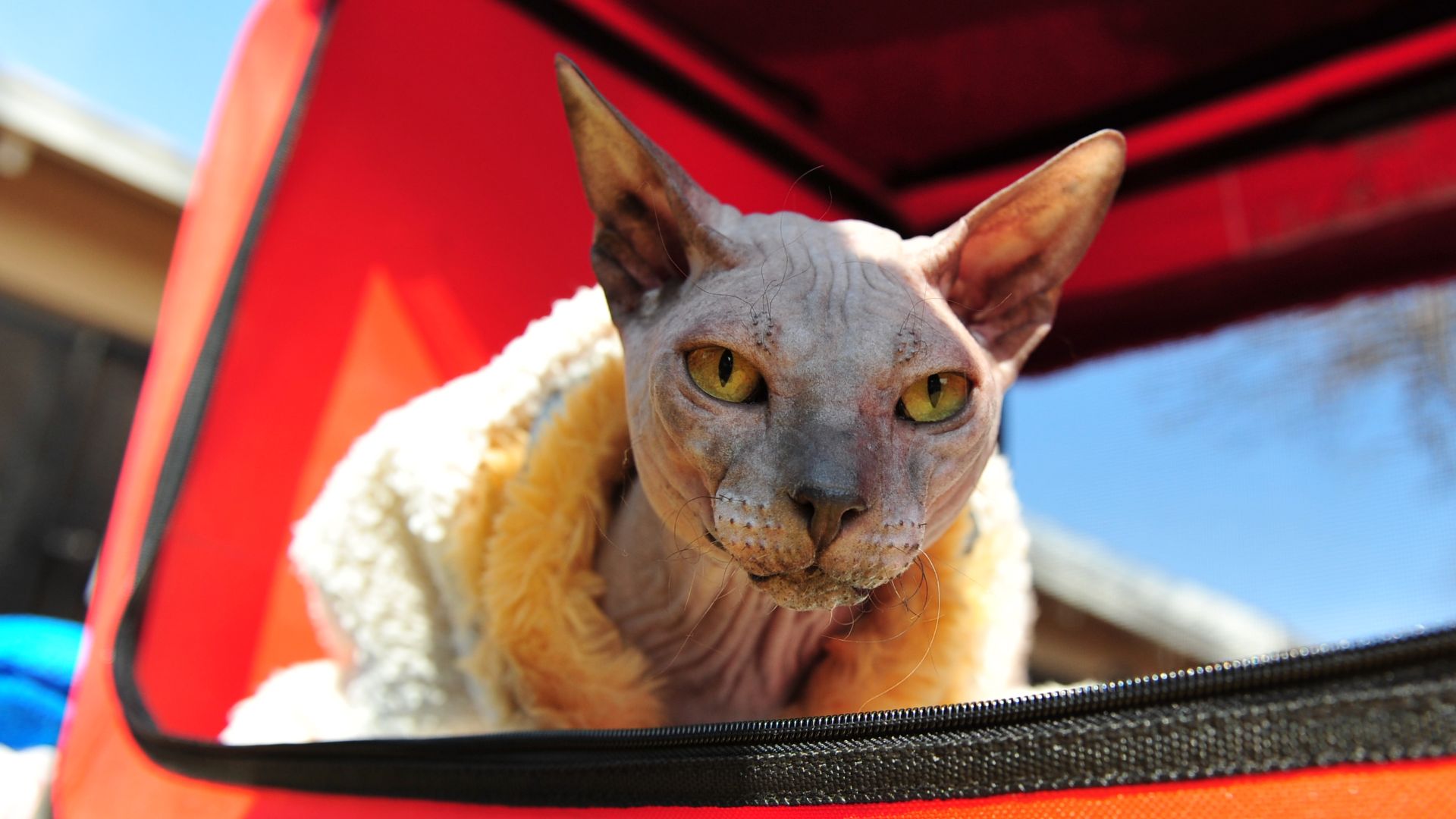
Another breed that hails from Russia, the Donskoy (also known as the Russian Hairless or the Don Sphynx) is a friendly and active cat who is well known and loved amongst pet parents for its extreme loyalty, which many say resembles that of a dog.
Sweet natured, energetic and playful, the Donskoy is highly intelligent and therefore very easy to train with the best cat treats. You’ll want to have plenty of interactive cat toys on hand for those times when you’re busy as this is one kitty that likes to be kept busy.
As one of the friendliest cat breeds, the Donskoy loves children and other cats, so they’ll do beautifully in a busy household with plenty of people to lavish them with attention. But that being said, as long as you have bucket loads of time to devote to them, they’ll be equally happy living with a single person or a couple.
The Donskoy comes in four coat types – rubber bald, flocked, velour or brush. The rubber bald is born bald and remains that way throughout its life; the flocked has a light fuzz that can disappear as it gets older; the velour has a bald spot on the top of its head; while the brush is bald on the head, the upper part of the back and the neck.
5. Dwelf
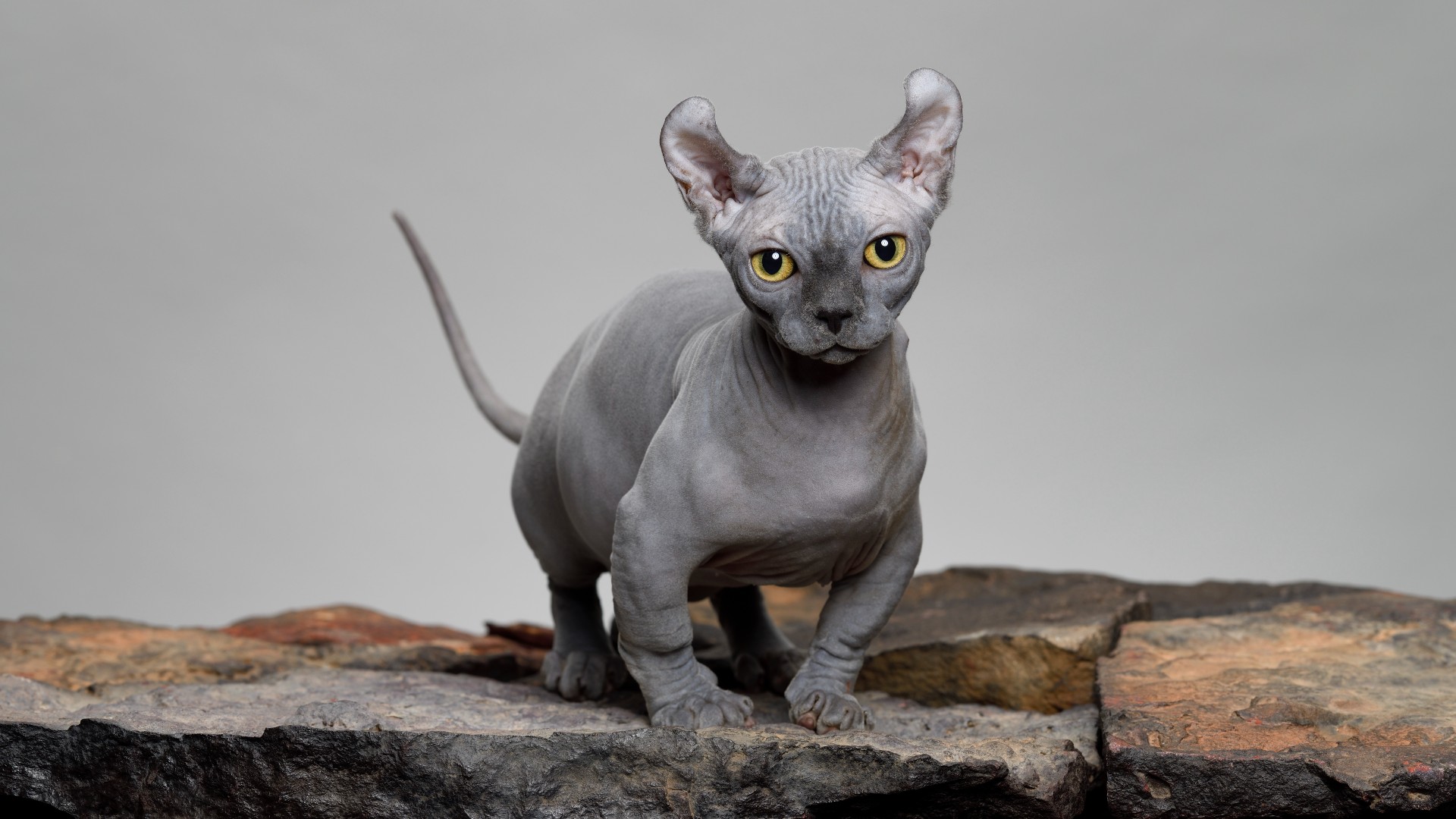
What do you get when you cross the munchkin with the sphynx and the American Curl? Why, the dwelf of course! Known for its elf-like features and dwarf-like stature, the dwelf may be a mix of three cats but has a strikingly similar appearance to the sphynx.
This is a very interactive cat, so like with most hairless cat breeds, you’ll want to have plenty of time on your hands that you can devote to this little guy who loves giving and receiving love and affection.
With either short or non-existent whiskers and eyelashes, the dwelf is hairless with the exception of a light coating of fluff that covers their entire body and feels like suede to the touch. They come in natural or dark gray coloring and because they’re known as a designer breed, be prepared to spend a pretty penny to welcome one into your family!
6. Minskin

Derived from cross-breeding the munchkin, Burmese, sphynx and Devon Rex, minskin cats are tiny, weighing no more than four pounds. They have large eyes and a round head, with short legs and a stocky body.
Although minskins first came into existence in 1998, in 2005 there were still only 50 of them in the world and even today, they’re considered to be a rare cat breed. Outgoing and playful, they’re flexible and adaptable so will slot right into any kind of household.
Because they’re so tiny, it’s vital the minskin is kept inside to avoid them being confronted by predators.
7. Ukrainian Levkoy
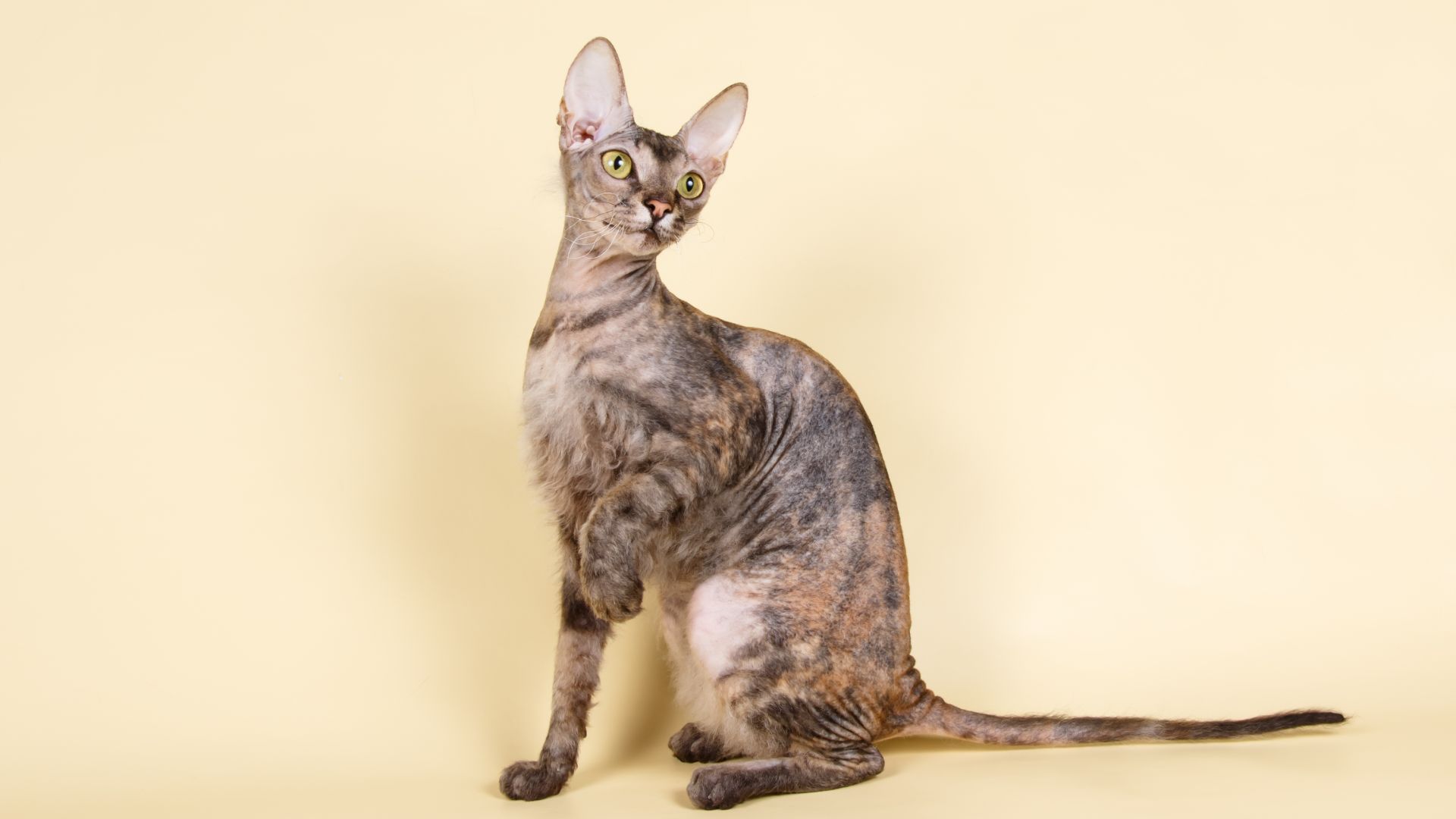
A cross between the Donskoy and the Scottish Fold, this inquisitive little kitty will be happy living just about anywhere as long as there’s a human or three there to shower them with attention!
Playful and super affectionate with their family members, they love children, other animals and strangers – so basically, pretty much everyone. They’re highly intelligent and moderately vocal, so if you’re not wanting constant chatter, this hairless cat breed hits the sweet spot with not too much and not too little.
The Ukrainian Levkoy can live for up to 15 years, is medium-sized in length and weighs around 10 pounds. You’ll want to invest in a decent cat tree and one of the best cat scratching posts as this breed loves to climb and explore.
8. Lykoi
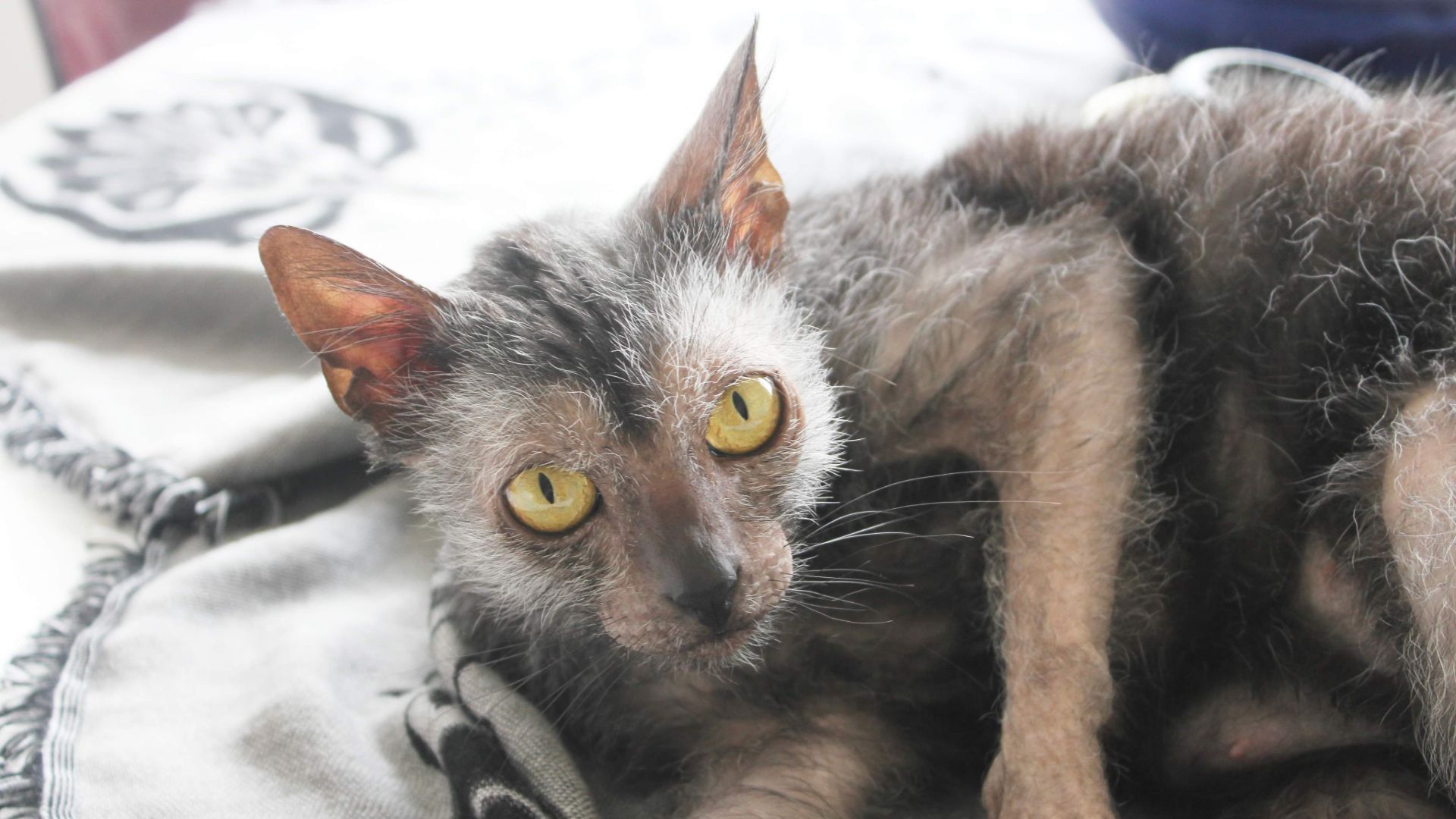
Often referred to as the werewolf cat, lykois are more half hairless than fully hairless and are a new and rare breed, developed between 2010 and 2013 in Virginia when two wolf-like kittens were discovered at a shelter and outcrossed to cultivate the breed.
Lykois are one of the most expensive cat breeds. These curious kitties are energetic and intelligent and you get the best of both worlds – they’re active and playful but still appreciate downtime. You’ll find them to be pleasant companions, too – once the fun’s over, they are affectionate and enjoy snuggling up to their favorite humans.
Caring for hairless cat breeds
Hairless breeds are by no means low maintenance. They may not need brushing, but they will still require regular grooming.
“These cats develop an oily buildup on their skin surface, so, in many cases, they will need weekly bathing,” explains companion animal vet Dr Rebecca MacMillan. “You will therefore need to introduce bathing from a young age to get your cat comfortable with the process. Some cats may benefit from a moisturiser too.”
You should also bear in mind that hairless cat breeds are less able to regulate their body temperature in cooler weather than other cats.
“Without insulating fur, they can easily feel the cold,” says Dr MacMillan. “This is one of the reasons why they are much better suited to an indoor lifestyle. If it’s particularly chilly, you may also need to provide your hairless cat with an extra layer like a sweater to keep them warm.”
Keeping your cat indoors will also help to limit their UV exposure, as hairless cats are at risk of sunburn without a protective layer of fur.
“If your cat has access to a garden, catio or outdoor enclosure for a spot of sunbathing, then you will need to apply pet-safe sun lotion,” warns Dr MacMillan. “Some owners even cover their hairless cats up with a light vest. Skin that becomes sun-damaged is more at risk of cancer, so it is essential to keep your cat protected.”
Read next: Unusual looking cats

